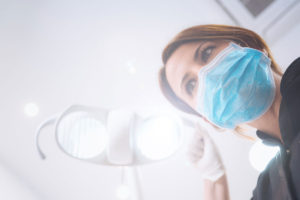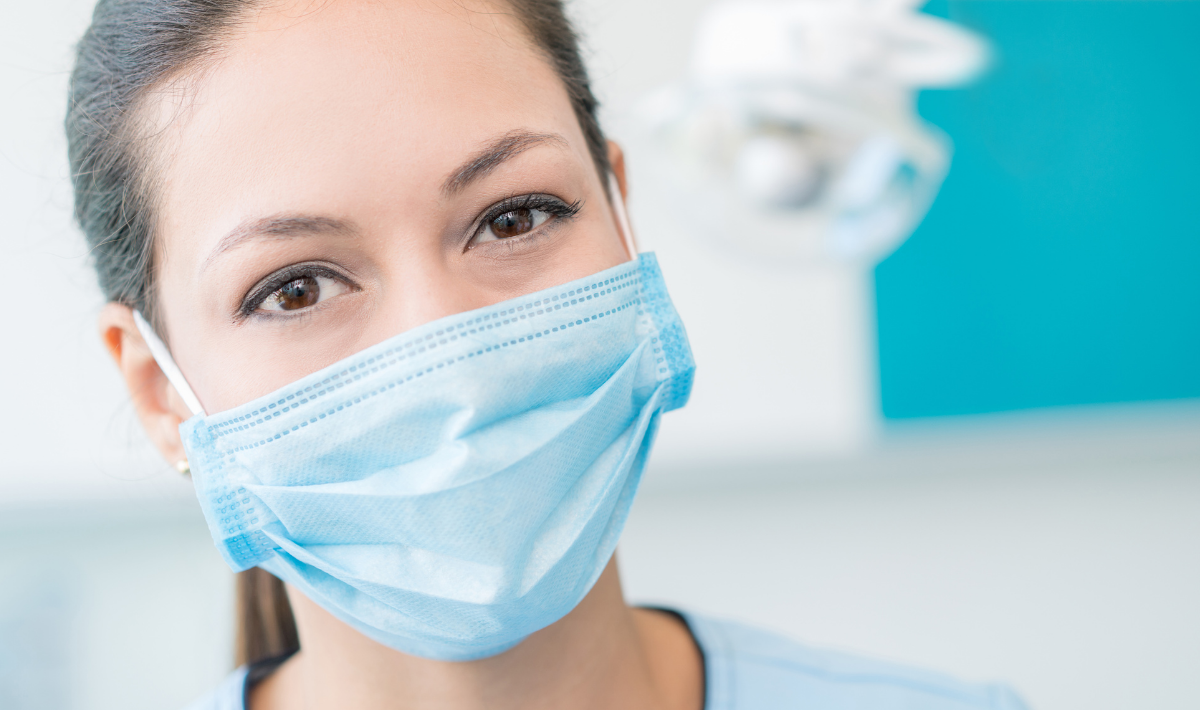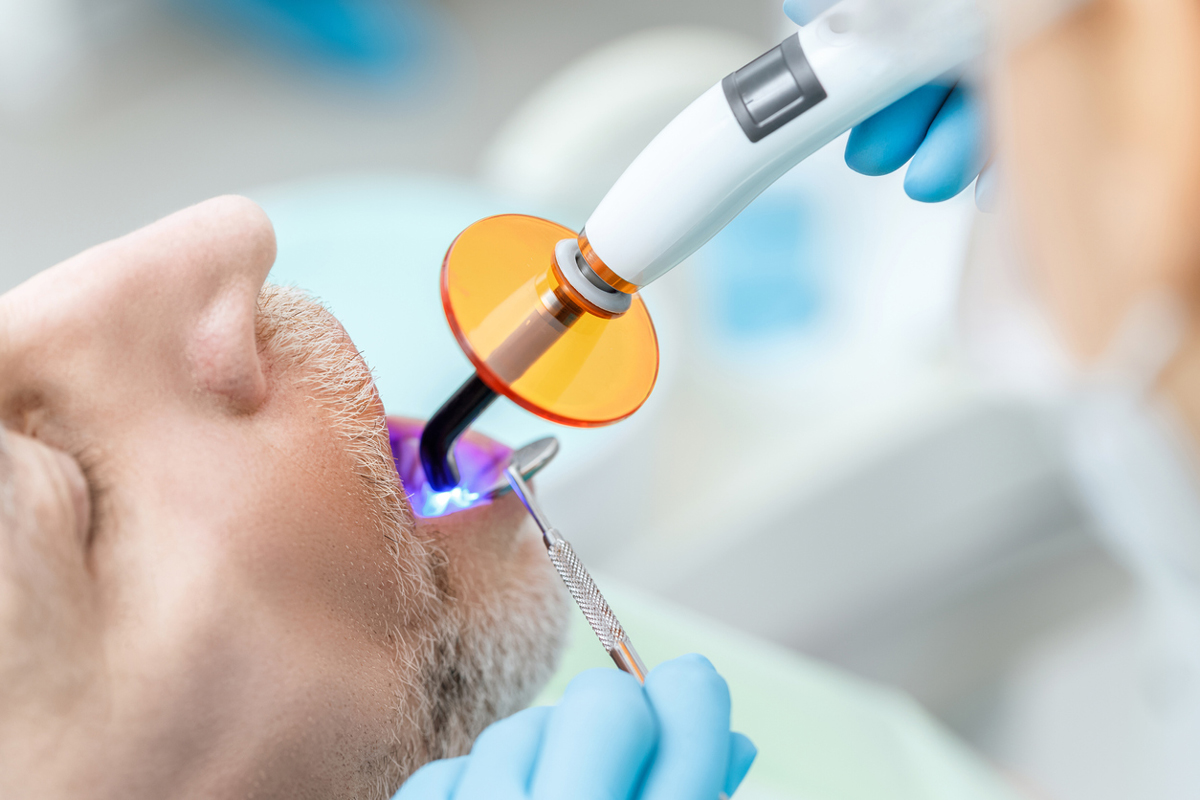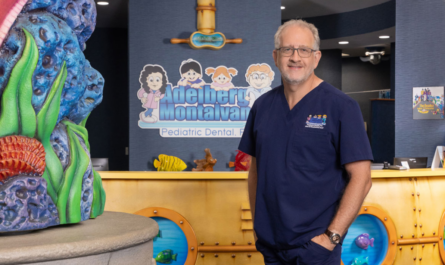Selecting comfortable, great-fitting masks for the dental team can be key in ensuring that they consistently wear them.
 If you believe dentistry to be a low-risk career, think again. According to a 2018 post by Business Insider, of the top five professions considered most damaging to one’s health, four are in dentistry, including that of dental hygienist and general dentist.
If you believe dentistry to be a low-risk career, think again. According to a 2018 post by Business Insider, of the top five professions considered most damaging to one’s health, four are in dentistry, including that of dental hygienist and general dentist.
Indeed, when dental professionals neglect to take necessary precautions, they place themselves in harm’s way. For starters, most procedures performed by dental clinicians using ultrasonic scalers, high speed handpieces and air-water syringes are capable of generating contaminated aerosols and splatter, according to Monica Cardona, product manager, personal protective equipment, Crosstex International Inc., a Cantel Medical Company. In fact, the ultrasonic scaler produces more airborne contamination than any other dynamic instrument in dentistry,1 she points out. Furthermore, dental aerosols can travel up to four feet from the work zone2 and remain airborne for up to 30 minutes, placing the dental team at risk for the transmission of infection.3
Some dental professionals may not be aware of the various risks airborne contamination poses to their team, says Cardona, who notes the following:
- There is an increased prevalence of respiratory infections among dentists, and the symptoms are associated with the highly contaminated breathing zone in the dental operatory.2
- Based on the average rate of respiration at 16 breaths per minute, a clinician has the potential for 7,680 exposures in a workday.4
- With laser dentistry on the rise, dental professionals are facing a new set of occupational health risks – the potential transmission of disease through the laser plume.5
- 95% of laser plume is made up of water, but the remaining 5% contains potentially hazardous bioaerosols, including cellular debris, blood fragments and bacteria.5
“The most effective means to reduce transmission of pathogenic organisms is the use of personal protection equipment (PPE) such as gloves, masks, and eye protection,” says Cardona. “The better educated dental professionals are, the more likely they will be to comply with accepted standards and guidelines,” she adds.
Selecting the right face mask
Selecting comfortable, great-fitting masks for the dental team can be key in ensuring that they consistently wear them. In addition, it’s important to understand mask ratings in order to choose the appropriate mask protection level for each procedure performed at the practice. Several mask designs are considered to provide exceptional comfort, according to Cardona:
- The Ultra Sensitive Earloop Mask with Secure Fit Technology from Crosstex, with an extra soft, white hypoallergenic, inner cellulose layer, will not lint, tear or shred, providing ultimate comfort.
- Masks with flat ear loops attached to the outside of the mask (as opposed to the inside of the mask) provide a comfortable fit and help eliminate irritation.
- Masks free of latex, fiberglass, chemicals, inks and dyes help minimize skin sensitivities.
- Masks with anti-fog or fog-free strips on the inner layer block and absorb moisture. They also form a strong seal, preventing the fogging of eyewear while it cushions the nose ridge.
- Some masks have unique vapor barriers on the outside layer, further blocking moisture.
Cardona recommends using the following charts to determine the most appropriate mask rating levels for different procedures:
| Face Mask Tests and User Benefits | ||
| Tests | Test Description | User Benefits |
| Fluid Resistance (mm Hg) | The ability of a face mask’s materials of construction to minimize fluids from traveling through the material and potentially coming into contact with the wearer. Face masks are tested with synthetic blood on a pass/fail basis at three velocities corresponding to the range of human blood pressure (80, 120, 160 mm Hg). The higher the pressure withstood, the greater the fluid spray and splash resistance. | Helps reduce potential exposure of the wearer to splash and splatter of blood, body fluids and other potentially infectious materials (OPIM). |
| Bacterial Filtration Efficiency
(BFE percent) @ 3.0 µm |
BFE is the measure of the percent efficiency at which a face mask filters bacteria passing through the mask by comparing the bacterial inlet concentration to mask effluent concentration. A higher percentage indicates higher filtration efficiency (i.e., a 95% filter efficiency indicates that 95% of the aerosolized bacteria was retained by the mask and 5% passed through the mask material. | Helps reduce wearer exposure to microorganisms. |
| Particulate Filtration Efficiency
(PFE percent) @ 0.1 µm |
PFE is the measure of the percent efficiency at which a face mask filters particulate matter passing through the mask by comparing the particulate inlet concentration to mask effluent concentration. | Helps reduce wearer exposure to airborne biological particles, inorganic dust and debris. |
| Differential Pressure
(ΔP mm H2O/cm2) |
Measures the resistance of mask materials to airflow, which relates to the breathability of the mask. The values are expressed from 1 to 5; the higher the number, the higher the PFE and BFE. | Provides measure of comfort and breathability. |
| Flammability
(flame spread) |
The rate at which the material burns determines the level of flammability; a minimum of a 3.5 second burn rate is required to pass with a Class 1 rating. | Mask materials are flame spread Class 1 rated, meeting FDA recommendations for materials of construction of surgical masks intended for use in operating rooms. |
Source: ASTM International (formerly known as American Society for Testing and Materials).
| Face Mask Material Requirements by ASTM Performance Level | |||
| Characteristic | LEVEL 1 | LEVEL 2 | LEVEL 3 |
| Fluid Resistance (mm Hg) | 80 | 120 | 160 |
| Bacterial Filtration Efficiency (BFE percent) @ 3.0 µm | ≥ 95% | ≥ 98% | ≥ 98% |
| Particulate Filtration Efficiency (PFE percent) @ 0.1 µm | ≥ 95% | ≥ 98% | ≥ 98% |
| Differential Pressure
(ΔP breathability) (mm H2O/cm2) |
< 4.0 | < 5.0 | < 5.0 |
| Flammability (flame spread) | Class 1 | Class 1 | Class 1 |
Source: ASTM International (formerly known as American Society for Testing and Materials).
| ASTM Level 1 | ASTM Level 2 | ASTM Level 3 |
| Ideal for procedures where low amounts of fluid, spray and/or aerosols are produced. | Ideal for procedures where light-to-moderate amounts of fluid, spray and/or aerosols are produced. | Ideal for procedures where moderate-to-heavy amounts of fluid, spray and/or aerosols are produced. |
| • Patient exams | • Limited oral surgery | • Complex oral surgery |
| • Operatory cleaning/maintenance | • Endodontics | • Crown preparation |
| • Impressions | • Prophylaxis | • Implant placement |
| • Lab trimming, finishing & polishing | • Restoratives/ composites | • Periodontal surgery |
| • Orthodontics | • Sealants | • Use of ultrasonic scalers (Magnetostrictive and Piezo) |
| • Laser-based applications* |
*Masks are considered a secondary control and are not meant to replace recommended primary engineering controls for laser plume exposure.
Source: ASTM International (formerly known as American Society for Testing and Materials).
ASTM International is an international standards organization, as well as a globally recognized leader in the development, product testing and delivery of international voluntary consensus standards. The latest version of the standard specifying performance of face masks, ASTM F2100-11, was released in April 2011. Face mask material performance is based on testing for fluid resistance, bacterial filtration efficiency (BFE), particulate filtration efficiency (PFE), breathability (Δ P) and flammability.
Stay ahead of the game
Not only must different face masks be worn for different procedures, they must be a good fit for the wearer. Contaminants can bypass a mask in several ways; a well-fitting mask that can conform to any face shape or size can greatly reduce the risk of infection. Masks with malleable nose and chin closures allow for a customized fit, increasing the effectiveness of mask protection. Furthermore, guidelines state a mask must be changed with each patient. It’s also recommended that clinicians change their mask every 20 minutes in a moderate-to-high aerosol environment and every hour in a non-aerosol environment. It’s important to note that the filter media of a mask becomes less effective when wet.
And, the best time to determine whether anyone at the practice has skin sensitivities is before new masks as purchased. Colors and inks made from chemicals and dyes are common irritants to the skin. If the inside of the mask is colored or has a print, this may be the cause of irritation. And while a white mask interior is ideal, not all white mask interiors are the same. A white cellulose interior is recommended for sensitive skin. Ideally, masks free of latex, fiberglass, chemicals, inks and dyes should be worn to minimize potential skin sensitivities.
References
- Chugh, A. “Occupational Hazards in Prosthetic Dentistry.” Dentistry 07, no. 02 (2017).
- Veena, et al. “Dissemination of Aerosol and Splatter during Ultrasonic Scaling: A Pilot Study.” Journal of Infection and Public Health 8, no. 3 (2015): 260-65.
- Harrel, S. “Contaminated Dental Aerosols: Risks and Implications for Dental Hygienists”. Dimensions of Dental Hygiene. October 2003;1(6):16, 18, 20.
- Johns Hopkins Medicine; Health Library. Vital Signs, accessed December 29, 2014. http://www.hopkinsmedicine.org/healthlibrary/conditions/cardiovascular_diseases/vital_signs_body_temperature_pulse_rate_respiration_rate_blood_pressure_85,P00866/
- Ulmer B C. “The hazards of surgical smoke.” AORN J. April 2008; 87(4):721-734.
Secure Fit Mask Technology
Crosstex masks with Secure Fit Mask Technology feature flexible aluminum strips above the nose and below the chin, creating additional breathing space and allowing for a custom fit, regardless of face shape or size. This innovative design significantly reduces gapping at top, bottom and sides, increasing the effectiveness of mask protection. Even if a mask has a high-level filter, the lack of a close circumferential seal to the face will negate filter performance, because particles will follow the path of least resistance and travel through the gaps between the mask and the face. Most regulatory and professional organizations recognize the inherent fit issues of masks showing gaps along the cheeks and chin. A recent study evaluating the total leakage through a surgical face mask indicated five to eight percent came from filter leakage, with 25-38 percent coming from face seal leakage.1
Source: Crosstex International Inc., a Cantel Medical Company.
Reference
1Grinshpun, S. A., Haruta, H., Eninger, R. M., Reponen, T., McKay, R. T., and Lee, S.-A. (2009). Performance of an N95 Filtering Facepiece Particulate Respirator and a Surgical Mask During Human Breathing: Two Pathways for Particle Penetration. J. Occup. Environ. Hyg., 6:593–603.




